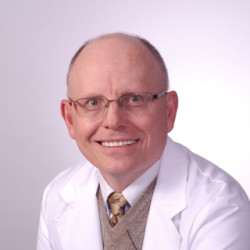Like most ACR members, I was excited to learn that ACR Convergence 2022 would be a live, in-person meeting, much like in years past, with a virtual attendance option. The meeting ran from Thursday November 10th through Monday November 14th. I attended ACR 2022 with 3 Geisinger staff colleagues and our 4 Geisinger Fellows. As Core Faculty, we were looking forward to helping our Fellows negotiate the scientific meeting, meet and speak with other Fellows and conference attendees and experience a little bit of Philadelphia. As it turned out, we reunited with 5 of our graduate fellows, adding to the camaraderie that ACR embodies. Unofficially, there were 7000 live ACR attendees and 4500 virtual registrants.
Friday marked the Annual Review Course, and Dr S. Bobo Tanne delivered a comprehensive osteoporosis talk centered around his ‘top 10 questions.’ He discussed diagnosis, DXA, high-risk groups, indications for treatment, monitoring strategies, FRAX, other risk calculators, lab testing, HRT, bisphosphonates, denosumab, romosozumab, PTH agents, how long to treat, MRONJ, AFF, treatment failure, calcium, vitamin D, VITAL Study, and very high-risk patients. He emphasized the use of osteoanabolic therapy as initial treatment for very high-risk patients. On Saturday, I attended an Abstracts Session on Osteoporosis and Metabolic Bone Disease. Here, the underrecognition and undertreatment of elderly men with osteoporosis was discussed – This resonated with me because over the last decade in Geisinger’s HiROC Program, we have similarly reported that 25-30 % of our fractured patients are men and we have also documented increased mortality in this male cohort. MI and CVA risks among those treated with Denosumab or Zoledronic Acid was second presentation - no increased risk for up to 36 months of treatment was seen. Comparative effectiveness of osteoporosis therapies was discussed while the last abstract reported that use of forearm DXA led to better fracture risk prediction when combined with spine but not hip BMD.
Drs Sonali Khandelwal and Felicia Cosman presented on Sequential Therapy and Lifelong Maintenance, emphasizing use of osteoanabolic therapies followed by anti-resorptive therapy, particularly for very high-risk patients. The original teriparatide data from 2001 was reported as well as data from ACTIVE and ACTIVExtend, with abaloparatide. FRAME and ARCH studies with romosozumab were highlighted. Impressive data regarding onset of anti-fracture efficacy favoring anabolic agents over anti-resorptives was shown and head to head data comparing teriparatide versus risedronate (VERO TRIAL) showed the superiority of teriparatide to reduce VF’s, clinical and non-vertebral fractures when compared to risedronate. The session concluded with a concise summary of the benefits of using anabolic therapy first in very high-risk patients, then followed by anti-resorptives. Use of T2T philosophy was discussed and an overview of common potential SE’s and discussion of ONJ, AFF, and the issue of cardiovascular risk with romosozumab (ARCH Study) balanced these comprehensive presentations.
Finally, on Monday the new ACR 2022 Updated Guidelines for the Prevention and Treatment of GIOP were introduced by Dr. Mary Beth Humphrey. This session generated a lively and spirited Q & A, with many questions unable to be answered due to time constraints. In addition to a review of the GRADE methodology used, makeup of the GIOP Committee, and review of Guideline summary, 12 Case Studies were presented by Dr Linda Russell. Similar to 2017 Guidelines, the updated guidelines are for patients taking prednisone at least 2.5 mg daily for 3 months or longer. FRAX is applied to determine High Risk (Major osteoporosis risk 20 % or >) versus Medium Risk (Major osteoporosis risk 10 % to 19.9 %) versus Low Risk (Major osteoporosis risk < 10 %). Strong versus conditional recommendations are emphasized. And, special populations are included : children 4-17 yrs old; women of childbearing potential; organ transplant recipients; and patients 18-40 yrs old. Attendee concerns included instances where anabolic agents were not considered first line, esp in the very high risk patients. Additionally, listing raloxifene as a possible treatment option in absence of an FDA-indication for use in GIOP was a very major concern and objection. These guidelines are very complicated and nuanced. The ACR GIOP committee who did this work needs to be commended on the extent of this project and its importance. But my concern rests on how primary care physicians will understand and apply these guidelines. And most importantly, in DXA interpretation, how do we make GIOP DXA analysis and recommendations easy for the ordering physician to understand. Finally, we are tasked with using a glucocorticoid dose adjusted FRAX – So, when a patient on 20 mg prednisone has FRAX done and major osteoporosis risk is 10 % and hip fracture risk is 2 %, we adjust major risk by multiplying 10 % x 1.15 so that risk is now 11.5 % and we adjust hip risk by multiplying 2 % x 1.2 so that risk is now 2.4 %. In this context, as certified ISCD densitometrists, do we make ‘general recommendations’ or do we make true clinical recommendations? Do we state that a ‘strong recommendation’ for Drug X is made or do we indicate that a ‘conditional recommendation’ for Drug Y is made. Attending this session was my first ‘dose’ of the guidelines. I will review the presentation, and as a live registrant, I will have ‘computer access’ to the meeting for 1 year. And, it is anticipated that the guidelines will be published in early 2023.
In summary, it was great to attend ACR Convergence 2022. I congratulate the ACR organizers and staff. I asked our 4 Fellows to sum up their ACR experience. Here are their replies: 1) Learning at a live meeting is much more satisfying and fun than virtually. 2) There sure is a lot to learn in our field of Rheumatology. 3) I was very impressed by the spirit of friendship and collegiality making learning so much more conducive. 4) It is reassuring to know that we have ‘computer access’ to the ACR meeting because I was unable to go to several sessions and I really need to review the sessions again.
Dr. Olenginski has no conflicts of interest to report.
Illustration by April Brust







